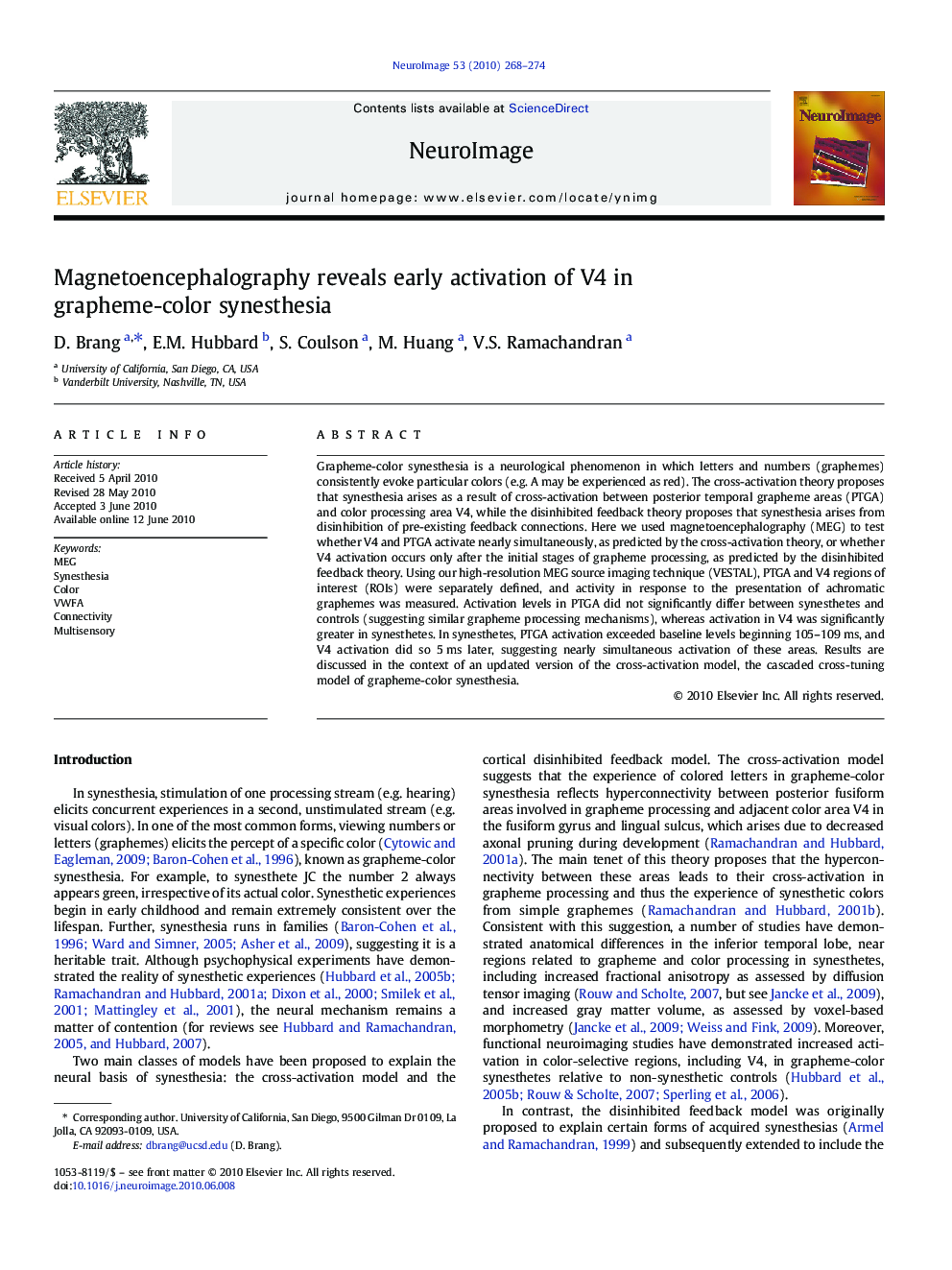| Article ID | Journal | Published Year | Pages | File Type |
|---|---|---|---|---|
| 6034848 | NeuroImage | 2010 | 7 Pages |
Abstract
Grapheme-color synesthesia is a neurological phenomenon in which letters and numbers (graphemes) consistently evoke particular colors (e.g. A may be experienced as red). The cross-activation theory proposes that synesthesia arises as a result of cross-activation between posterior temporal grapheme areas (PTGA) and color processing area V4, while the disinhibited feedback theory proposes that synesthesia arises from disinhibition of pre-existing feedback connections. Here we used magnetoencephalography (MEG) to test whether V4 and PTGA activate nearly simultaneously, as predicted by the cross-activation theory, or whether V4 activation occurs only after the initial stages of grapheme processing, as predicted by the disinhibited feedback theory. Using our high-resolution MEG source imaging technique (VESTAL), PTGA and V4 regions of interest (ROIs) were separately defined, and activity in response to the presentation of achromatic graphemes was measured. Activation levels in PTGA did not significantly differ between synesthetes and controls (suggesting similar grapheme processing mechanisms), whereas activation in V4 was significantly greater in synesthetes. In synesthetes, PTGA activation exceeded baseline levels beginning 105-109Â ms, and V4 activation did so 5Â ms later, suggesting nearly simultaneous activation of these areas. Results are discussed in the context of an updated version of the cross-activation model, the cascaded cross-tuning model of grapheme-color synesthesia.
Related Topics
Life Sciences
Neuroscience
Cognitive Neuroscience
Authors
D. Brang, E.M. Hubbard, S. Coulson, M. Huang, V.S. Ramachandran,
